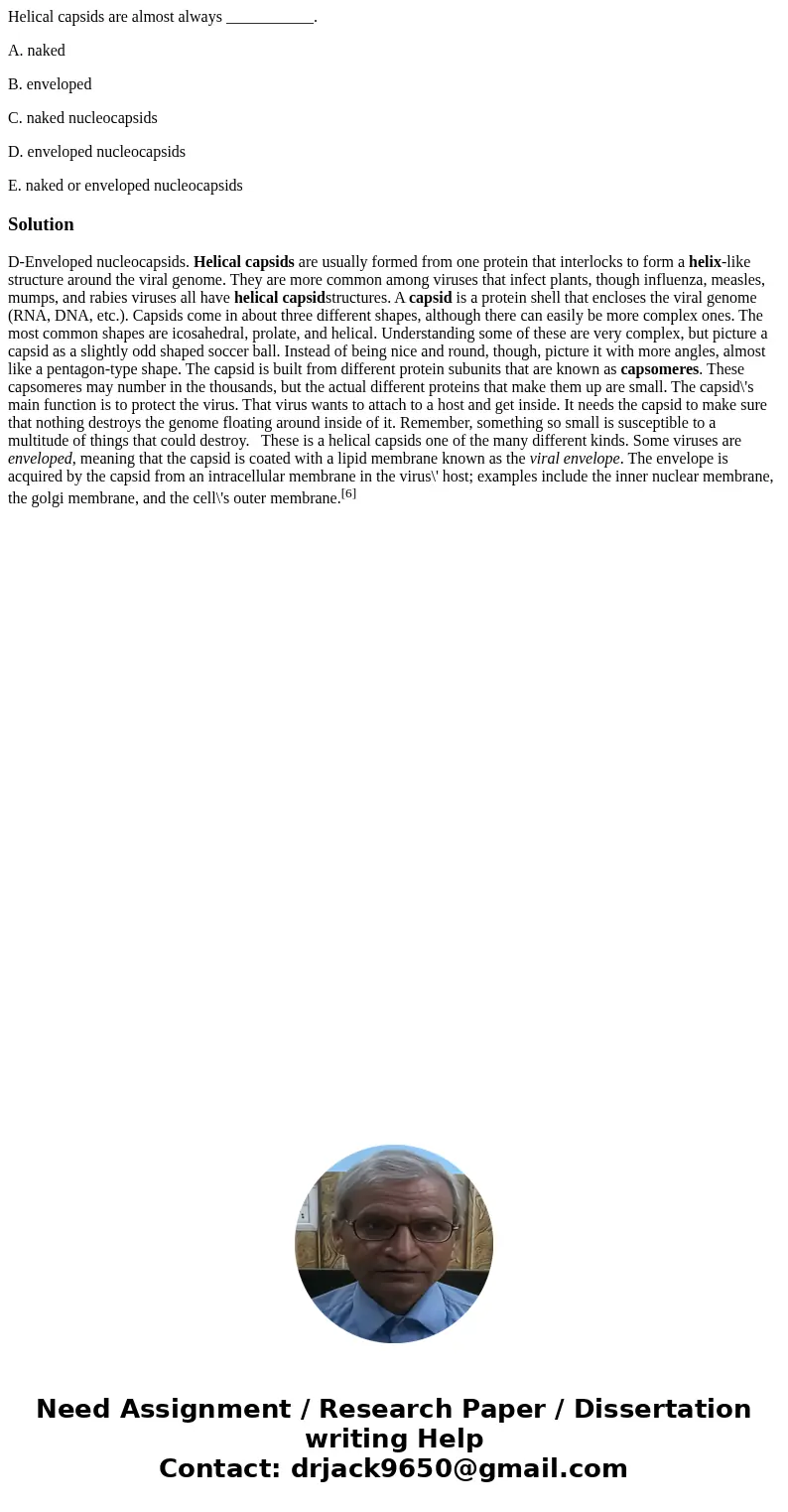Helical capsids are almost always A naked B enveloped C nak
Helical capsids are almost always ___________.
A. naked
B. enveloped
C. naked nucleocapsids
D. enveloped nucleocapsids
E. naked or enveloped nucleocapsids
Solution
D-Enveloped nucleocapsids. Helical capsids are usually formed from one protein that interlocks to form a helix-like structure around the viral genome. They are more common among viruses that infect plants, though influenza, measles, mumps, and rabies viruses all have helical capsidstructures. A capsid is a protein shell that encloses the viral genome (RNA, DNA, etc.). Capsids come in about three different shapes, although there can easily be more complex ones. The most common shapes are icosahedral, prolate, and helical. Understanding some of these are very complex, but picture a capsid as a slightly odd shaped soccer ball. Instead of being nice and round, though, picture it with more angles, almost like a pentagon-type shape. The capsid is built from different protein subunits that are known as capsomeres. These capsomeres may number in the thousands, but the actual different proteins that make them up are small. The capsid\'s main function is to protect the virus. That virus wants to attach to a host and get inside. It needs the capsid to make sure that nothing destroys the genome floating around inside of it. Remember, something so small is susceptible to a multitude of things that could destroy. These is a helical capsids one of the many different kinds. Some viruses are enveloped, meaning that the capsid is coated with a lipid membrane known as the viral envelope. The envelope is acquired by the capsid from an intracellular membrane in the virus\' host; examples include the inner nuclear membrane, the golgi membrane, and the cell\'s outer membrane.[6]

 Homework Sourse
Homework Sourse